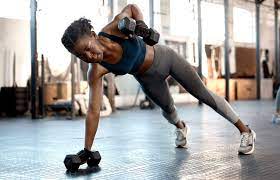Introduction: In the exercise community, the debate over the most effective method for enhancing flexibility has long been dominated by static stretching. However, recent studies have cast doubt on its efficacy, opening the door to alternative approaches. Among these, resistance training has emerged as a promising contender. Moreton et al., 2011, delves into the benefits of resistance training in improving flexibility, challenging conventional wisdom and offers insights into its potential.
The Power of Resistance Training: Contrary to popular belief, resistance training doesn’t just build muscle—it also has profound effects on flexibility. Traditionally, concerns have lingered that strength training might lead to reduced flexibility, but emerging evidence suggests otherwise. This means potentially not wasting time and energy on static stretching when the same benefits can be obtained with resistance training, alongside the many other physiological benefits.
Unveiling the Study: In the study by Moreton et al., 2011, volunteers underwent either a five-week resistance training program or engaged in static stretching sessions targeting the same muscle-joint complexes. The results showed that both groups experienced significant improvements in flexibility, challenging the notion that resistance training reduces flexibility. Moreover, the resistance training group demonstrated superior gains in knee extension peak torque, underscoring the multifaceted benefits of this approach.
Reimagining Flexibility Training: The implications of these findings are profound for athletes and fitness enthusiasts alike. By incorporating full range of motion resistance training into their routines, individuals can not only enhance strength but also unlock greater flexibility. This challenges the traditional paradigm of separating strength and flexibility training, offering a more integrated approach to overall fitness.
Looking Ahead: While Moreton et al., 2011, provides compelling evidence for the efficacy of resistance training in improving flexibility, it represents just the tip of the iceberg. Resistance training holds immense potential as a tool for maximizing flexibility and optimizing athletic performance.
Conclusion: In the evolving landscape of exercise science, resistance training emerges as a formidable ally in the quest for flexibility. By debunking myths and highlighting its transformative effects, this research paves the way for a new era of integrated training paradigms. As we continue to unravel the mysteries of human physiology, resistance training changes the way we approach flexibility training, facilitating individuals in reaching new heights of performance and well-being.



